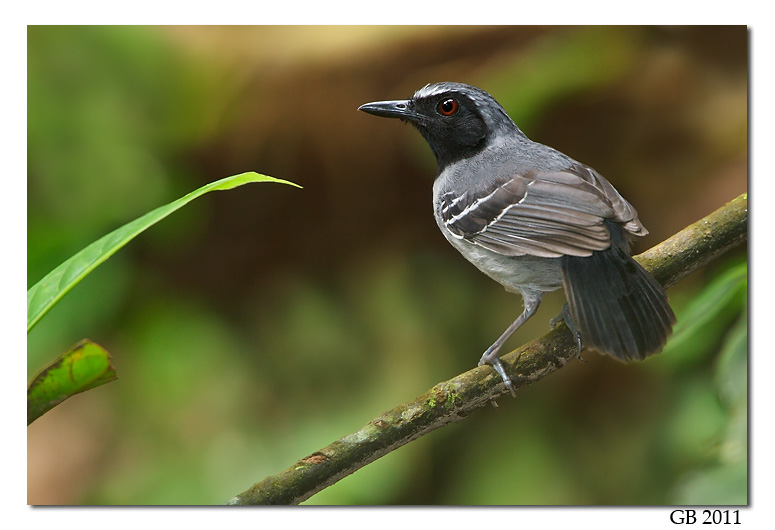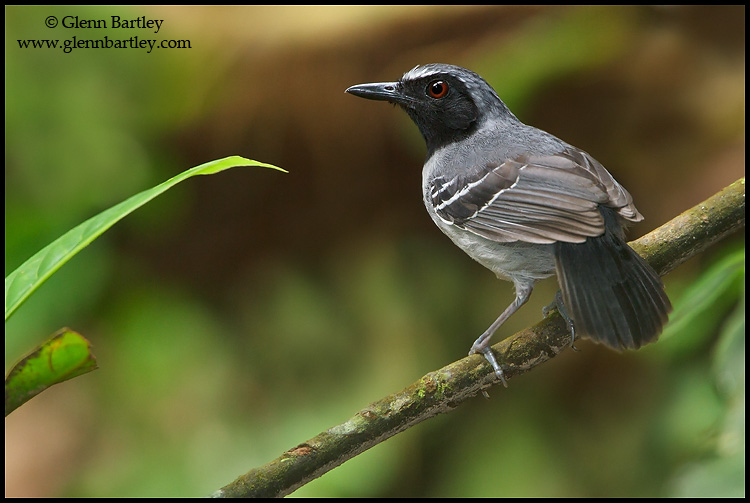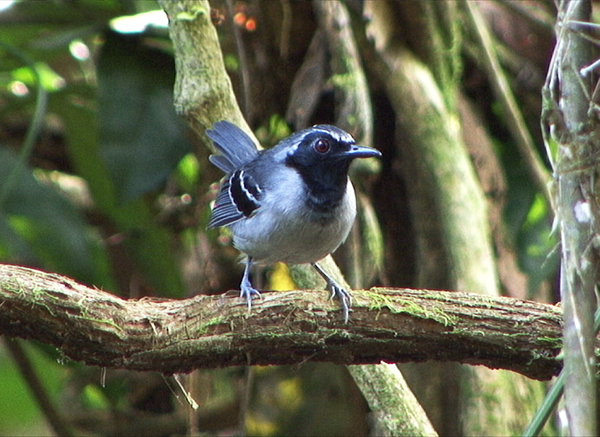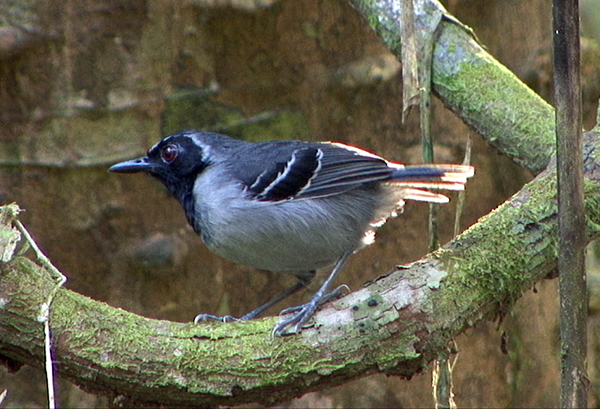
Myrmoborus myotherinus
TAXONOMY
Myrmoborus myotherinus Spiz, 1825.
OTHER COMMON NAMES
French: Alapi masquй; German: Schuppenflьgel- Ameisenschnдpper;
Spanish: Hormiguero Ratonero.
PHYSICAL CHARACTERISTICS
5 in (13 cm), with a bright red iris, and short tail.
DISTRIBUTION
Amazonian region of northern South America, including southern
Venezuela, southeastern Colombia, eastern Ecuador, eastern
Peru, northern Bolivia, and widely in Amazonian Brazil.
HABITAT
Below 2,300 ft (700 m) in the mid- and upper-canopy of humid
terra-firme (non-flooded) tropical forest and mature secondary
forest.
BEHAVIOR
Nonmigratory pairs defend a breeding territory. Sometimes associated
with mixed-species foraging flocks. Song is a loud, fast
series of notes.
FEEDING ECOLOGY AND DIET
Glean insects and other arthropods from foliage in dense
lower-canopy vegetation.
REPRODUCTIVE BIOLOGY
Monogamous pairs bond for life, typically lay two eggs, and
share incubation and care of nestlings and fledglings.
CONSERVATION STATUS
Not threatened. Widespread and relatively abundant.
SIGNIFICANCE TO HUMANS
No direct significance, except for the indirect economic benefits
of bird-watching and ecotourism.
Photo Gallery of - Black-faced antbird




 Animalia Life
Animalia Life